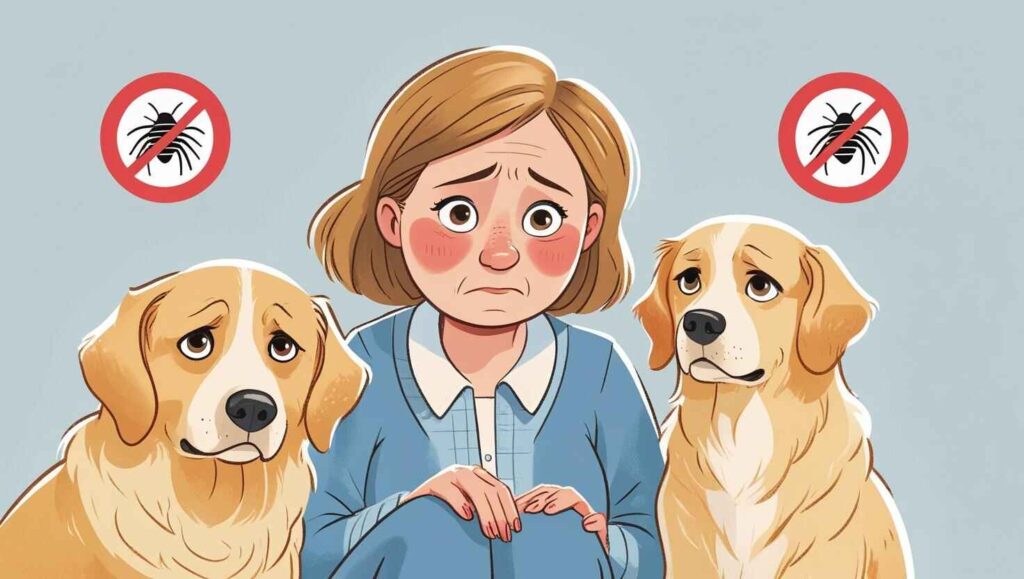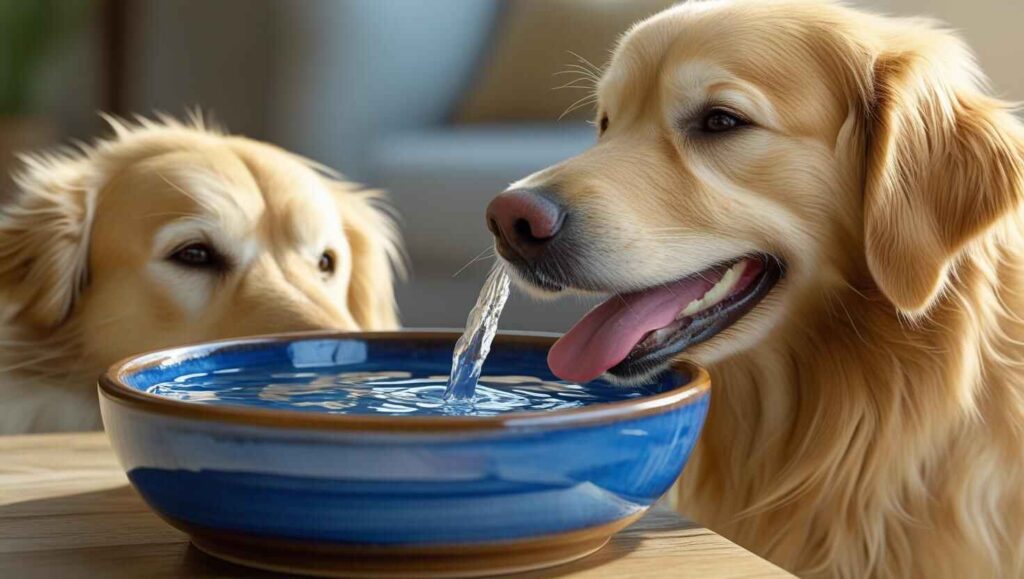🧬 Understanding Lice: Human vs. Canine
🔍 What Are Lice?
Lice are tiny, wingless parasitic insects that live on the skin of mammals and feed on blood or skin debris. They’re species-specific, meaning that the lice you might encounter are different depending on whether you’re a human, dog, cat, or other animal.
There are two main types of lice:
- Chewing lice (Trichodectes canis) – Chewing lice, also known as Trichodectes canis, are fairly common in dogs. These tiny pests survive by nibbling on dead skin flakes and debris.
- Sucking lice (Linognathus setosus) – also found on dogs, they feed on blood.
🧑⚕️ Human Lice vs Dog Lice
| Type | Found On | Feeds On | Transmission |
|---|---|---|---|
| Pediculus humanus | Humans | Blood | Human-to-human only |
| Trichodectes canis | Dogs | Skin debris | Dog-to-dog only |
| Linognathus setosus | Dogs | Blood | Dog-to-dog only |
Humans cannot get lice from dogs and vice versa due to biological incompatibility between lice species and their hosts.
🔄 Can Lice Be Transmitted Between Humans and Dogs?
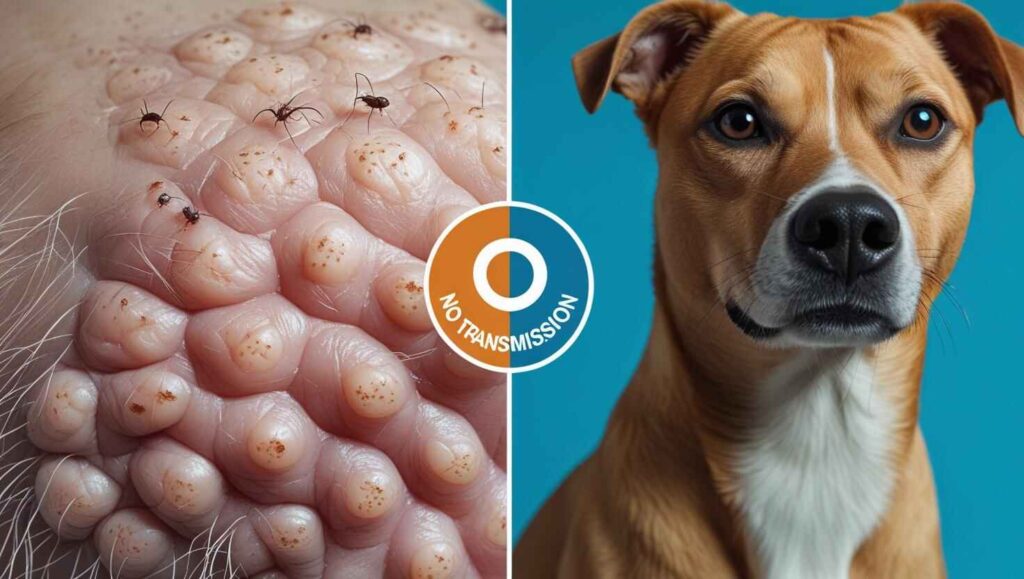
📚 Scientific Evidence on Cross-Species Lice Transmission
The short answer is no — dogs cannot get lice from humans, and humans cannot get lice from dogs. Scientific studies and veterinary research confirm that lice are host-specific parasites, which means they are adapted to live only on one species.
🧬 Why Lice Prefer Specific Hosts
Each species of lice has evolved alongside its preferred host and has adapted to:
- The specific skin pH
- Body temperature
- Hair or fur structure
Because lice rely so closely on a specific host, they can’t live or reproduce on animals outside their own species
🐶 Symptoms of Lice in Dogs
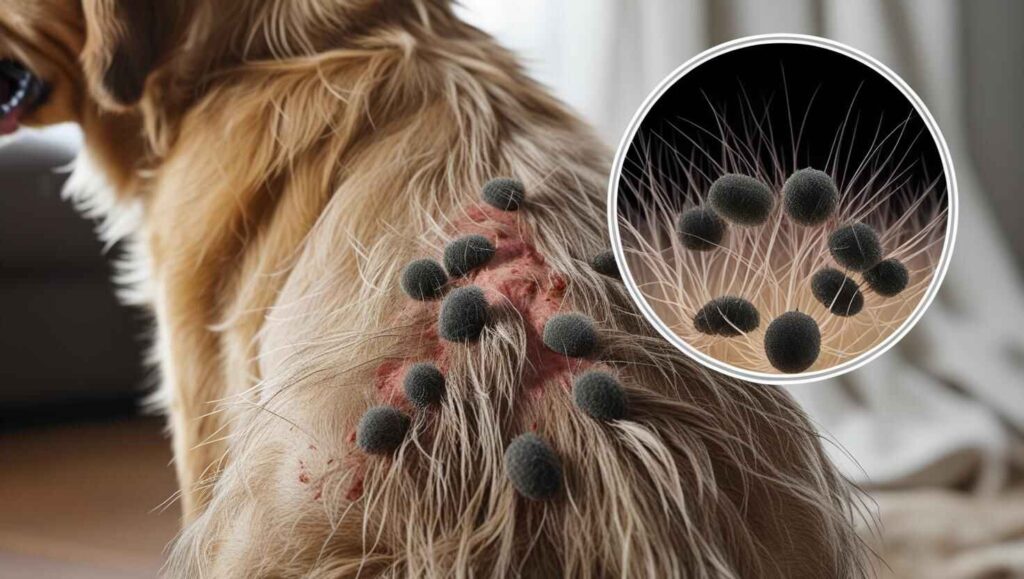
🚩 Common Signs to Watch For
Dogs can’t catch lice from people, but they can easily pick them up from another infected dog. Watch for:
- Intense itching or scratching
- Red, inflamed skin
- Dry coat or hair loss
- Tiny white or yellow lice or nits (eggs) attached to hair
🏥 How Lice Affect Your Dog’s Health
Lice can cause:
- Discomfort and stress
- Skin infections from excessive scratching
- Anemia (in severe infestations due to blood loss)
Puppies, senior dogs, or immunocompromised pets are more at risk.
⚠️ Causes and Risk Factors
🌍 Environmental Triggers
Lice thrive in:
- Overcrowded spaces like shelters or kennels
- Poor hygiene or grooming
- Shared brushes, bedding, or collars
🐕 Close Contact with Infected Animals
Transmission occurs via:
- Physical contact with infected dogs
- Shared grooming tools or living areas
🧪 Diagnosis and Identification of Dog Lice
🔎 Physical Inspection
You can spot lice by:
- Parting your dog’s fur and looking for crawling insects
- Finding eggs (nits) near the base of hair shafts
- Noticing flaky skin and hair clumps
👨⚕️ When to See a Veterinarian
If symptoms persist or worsen, seek professional help for:
- Accurate diagnosis using a microscope
- Prescription treatments
- Monitoring for secondary infections
💊 How to Treat Lice in Dogs
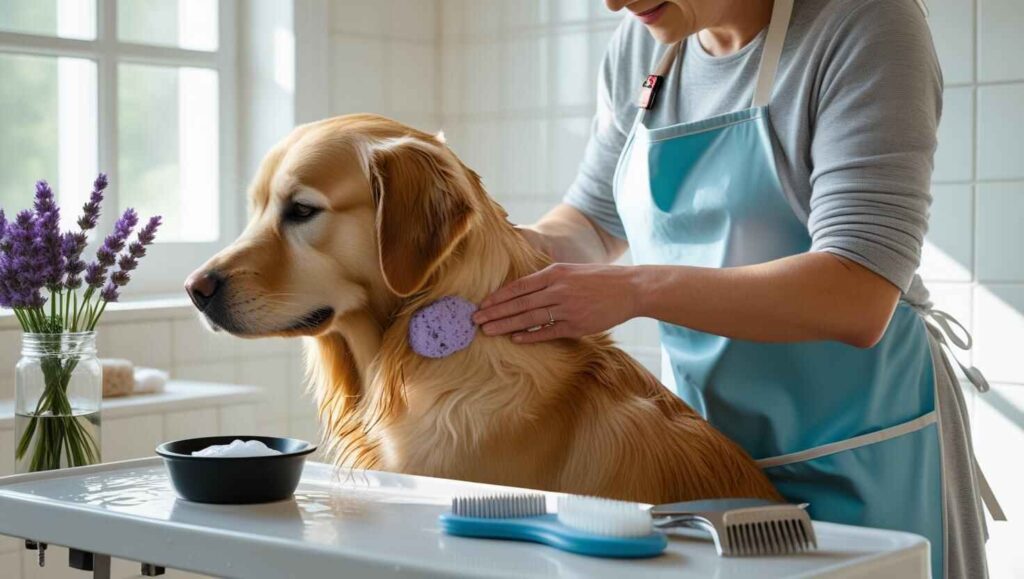
🧴 Topical Treatments
- Over-the-counter shampoos containing pyrethrin or permethrin
- Medicated sprays or spot-on treatments
🌿 Natural Remedies
Use with caution and only under vet guidance:
- Neem oil
- Apple cider vinegar rinse
- Coconut oil (helps soothe itchy skin)
🐾 Professional Veterinary Care
For severe cases:
- Oral medications
- Injectable treatments
- Skin scrapes or blood tests to rule out other conditions
🛡️ How to Prevent Lice in Dogs
🧼 Hygiene and Grooming Habits
- Bathe and brush your dog regularly
- Disinfect collars, brushes, and bedding
- Avoid contact with infested dogs
🩺 Regular Checkups and Preventative Products
- Use flea/tick preventatives that cover lice
- Schedule regular vet visits
- Keep your pet’s environment clean and clutter-free
🙋 Do Humans Get Lice from Dogs?
While it’s understandable to worry about catching lice from your dog, there is no risk. Human lice need human hosts. If you have lice, your dog cannot “catch” them from you — and vice versa.
❌ Myths vs. Facts
🔍 Debunking Common Misconceptions
| Myth | Reality |
|---|---|
| Dogs can catch lice from kids | False – different lice species |
| You can treat dog lice with human shampoo | False – unsafe and ineffective |
| It’s a common myth that lice and fleas are the same | False – but in reality, they’re completely different parasites |
⚖️ Pros and Cons of Home Treatment
✅ Benefits of At-Home Solutions
- Affordable
- Convenient
- Mild infestations may resolve quickly
⚠️ Risks and Limitations
- Misdiagnosis can delay proper treatment
- Not all products are safe or effective
- Severe infestations need veterinary care
❓ Frequently Asked Questions (FAQs)
1. Do dogs get lice from humans directly?
No. Lice are species-specific. Humans have different lice than dogs.
2. What should I do if I think my dog has lice?
Check their fur, look for crawling insects or eggs, and consult your vet for treatment.
3. Are lice and fleas the same?
No. Fleas jump and are more common; lice are slow-moving and attach to hair.
4. Can my child bring lice home from school and infect our dog?
No. Human lice do not survive on dogs.
5. Is dog lice dangerous to humans?
No. Dog lice cannot live or reproduce on humans.
6. How long does it take to get rid of dog lice?
With proper treatment, it may take 2–4 weeks. Follow your vet’s instructions closely.
✅ Conclusion: Keeping Your Pup Lice-Free
Lice might sound gross, but here’s some relief—you can’t catch lice from your dog, and your dog can’t get them from you either. Lice are a manageable condition when caught early and treated properly. Stick to a good grooming routine, avoid contact with infected pets, and stay vigilant.
Keeping your furry friend comfortable and parasite-free is part of being a responsible pet owner. And remember—when in doubt, your vet is your best resource!
# : You may also like:

